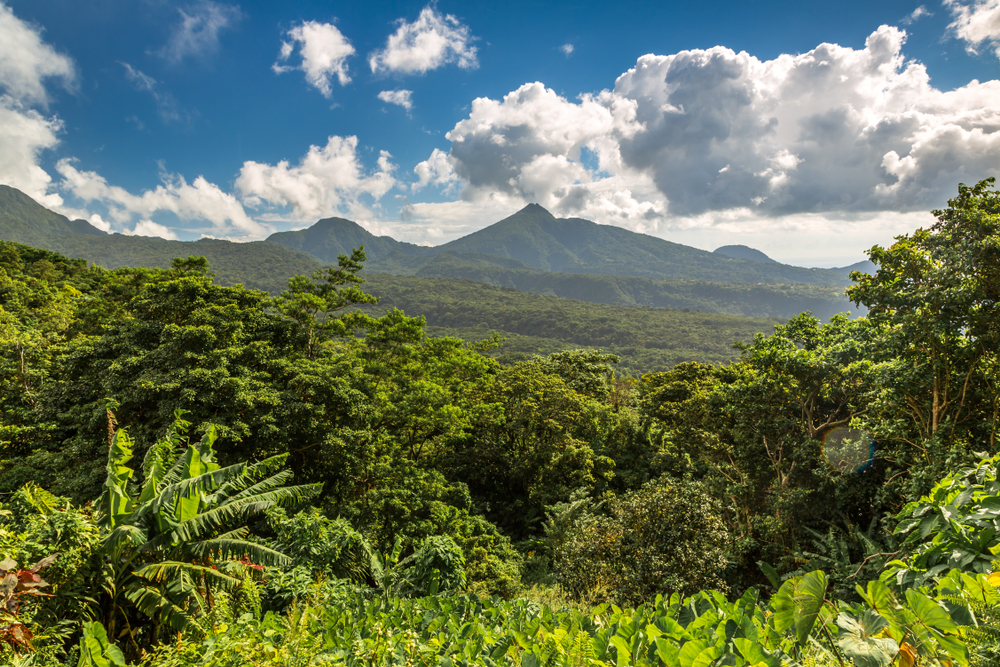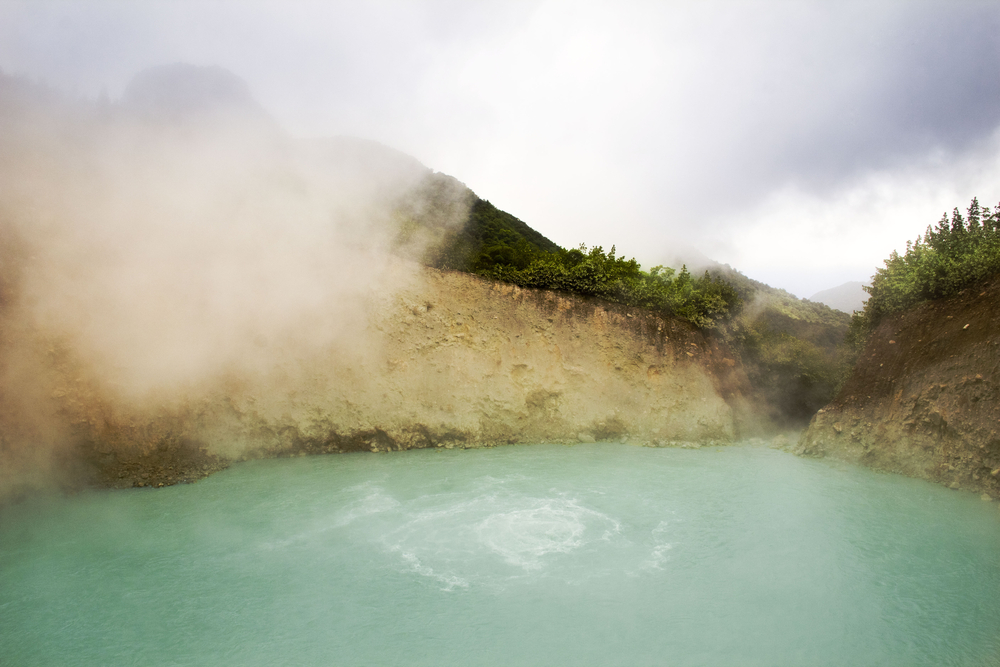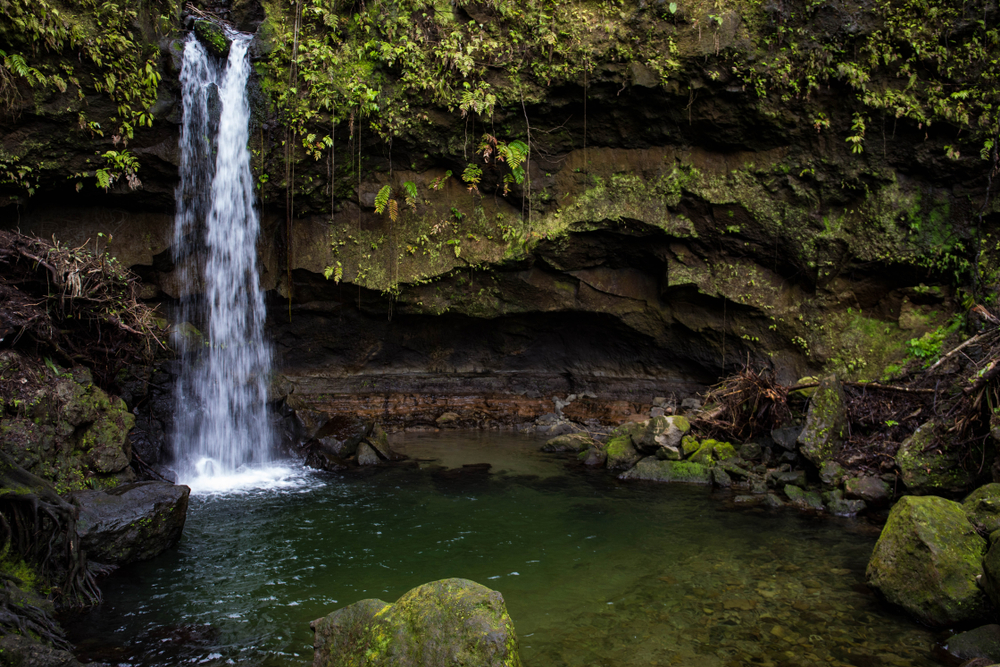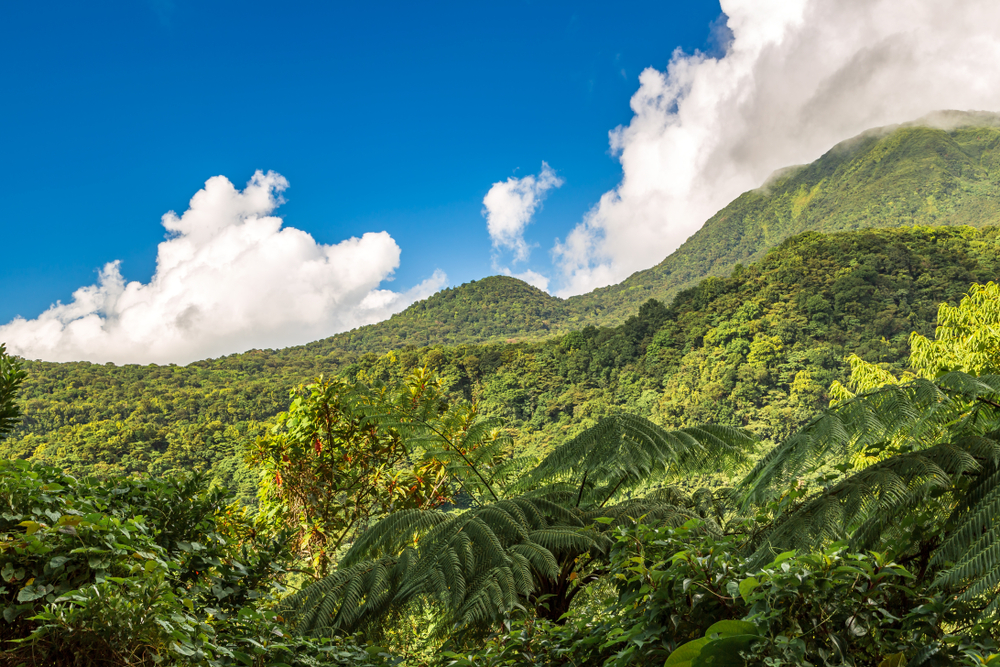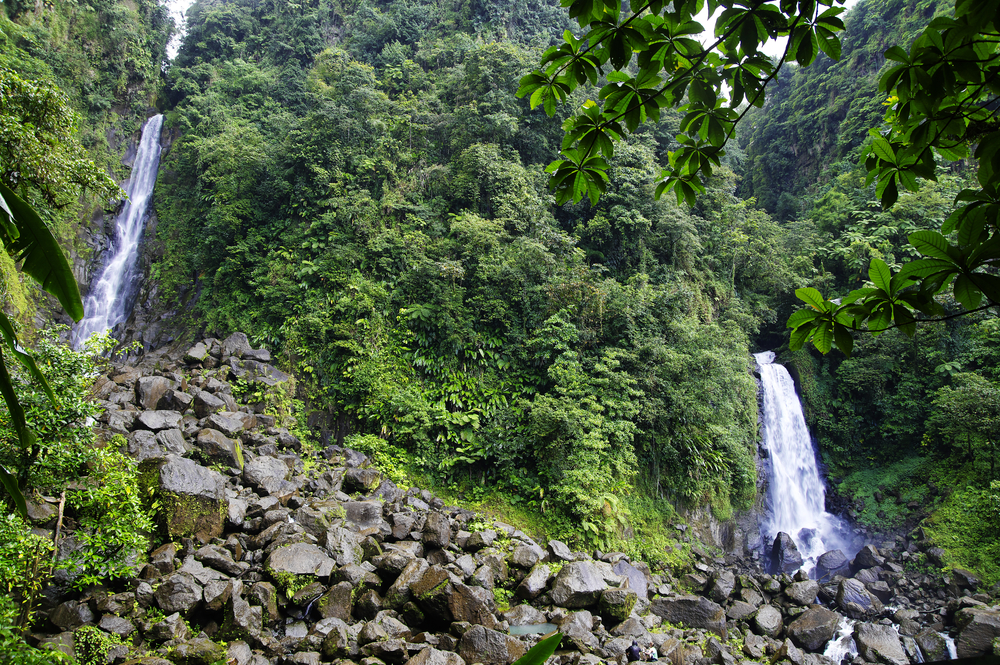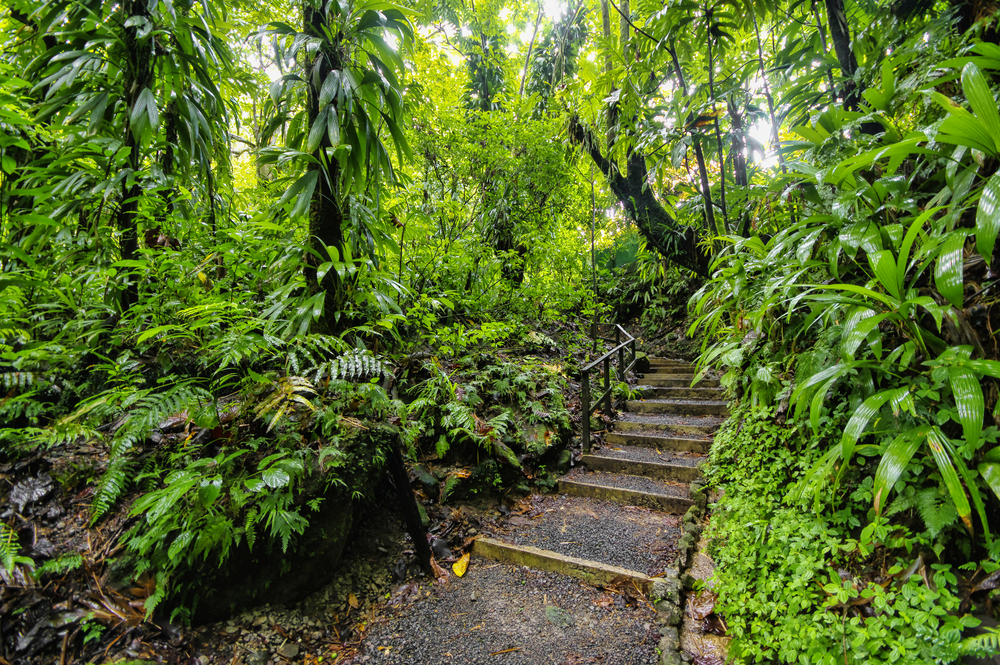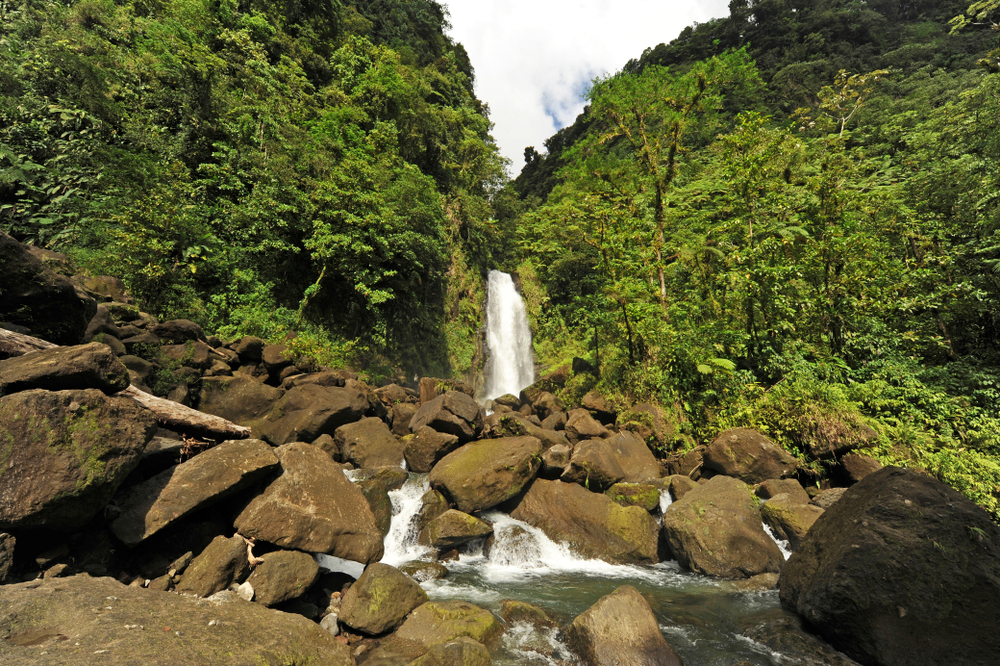Morne Trois Pitons Overview
Morne Trois Pitons National Park, locally known as Parc National Morne Trois Pitons, is located in the south-central region of Dominica. Covering an area of 17,000 acres (approximately 26.56 square miles or 68.78 square kilometers), this UNESCO World Heritage Site is renowned for its extraordinary volcanic landscapes, diverse ecosystems, and geothermal activity. The park is named after its centerpiece, Morne Trois Pitons, a towering 4,600-foot (1,402-meter) stratovolcano.
The landscape of Morne Trois Pitons National Park is a showcase of natural wonders, featuring volcanic peaks, lush rainforests, deep gorges, and hot springs. One of the park’s most famous attractions is the Boiling Lake, the second-largest of its kind in the world. The lake, which constantly emits steam, is fed by geothermal activity, making it a surreal sight for hikers. The Valley of Desolation, with its bubbling mud pools and fumaroles, adds to the park’s otherworldly appeal. Visitors can also explore waterfalls such as Trafalgar Falls and Middleham Falls, which offer picturesque settings surrounded by tropical vegetation.
The park’s vegetation is incredibly diverse, ranging from dense rainforests at lower altitudes to cloud forests at higher elevations. The forest is rich with towering hardwood trees, ferns, orchids, and bromeliads. The park’s unique mix of volcanic and forest ecosystems creates a fertile ground for a wide variety of plant life.
Wildlife in Morne Trois Pitons National Park is equally impressive. The park is home to Dominica’s two endemic parrot species—the Imperial parrot (Sisserou) and the Red-necked parrot (Jaco). Visitors may also spot species such as agoutis, iguana, and a range of amphibians and reptiles. Birdwatchers can look forward to seeing a variety of native and migratory birds in the park’s rich habitats.
Park Map
Morne Trois Pitons National Park Highlights
Engaging Morne Trois Pitons
Sources
- A VIrtual Dominica, Morne Trois Pitons National Park, https://www.avirtualdominica.com/dominica-directory/morne-trois-pitons-national-park/, retrieved August 2024.
- Nightborn Travel, Everything You Need to Know About Morne Trois Pitons, https://nightborntravel.com/morne-trois-pitons-national-park-dominica/, retrieved August 2024.
- UNEP, Morne Trois Pitons National Park, http://world-heritage-datasheets.unep-wcmc.org/datasheet/output/site/morne-trois-pitons-national-park/, retrieved August 2024.
- UNESCO, Morne Trois Pitons National Park, https://whc.unesco.org/en/list/814/, retrieved August 2024.
- Wikipedia, Morne Trois Pitons National Park, https://en.wikipedia.org/wiki/Morne_Trois_Pitons_National_Park, retrieved August 2024.








































































